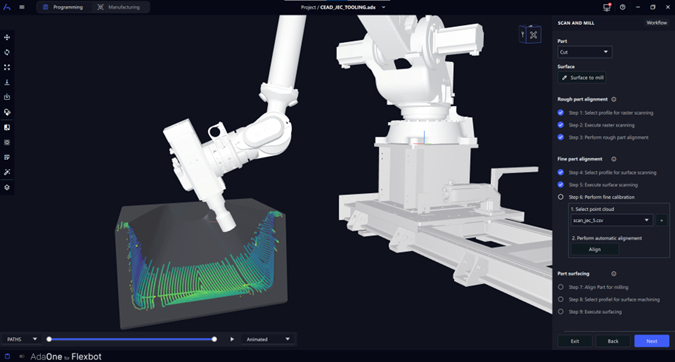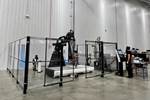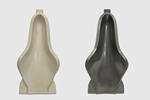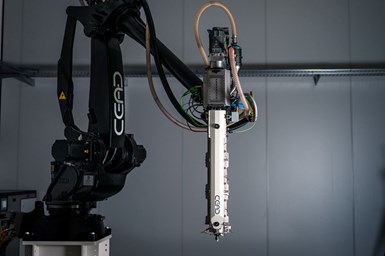CEAD, Adaxis launch “AdaOne for Flexbot” software integration
Collaborative effort results in a software experience that seamlessly integrates with CEAD’s Flexbot systems, aiming to elevate the efficiency in robotic large-format 3D printing with composites.

AdaOne for Flexbot interface, showing the scan-to-mill feature. Source (All Images) | CEAD
CEAD (Delft, Netherlands) a company in the robotic large-format 3D printing space, announces a pivotal collaboration with Adaxis (Bidart, France), a fast-growing robotics software company. This strategic partnership aims to strengthen the integration between CEAD’s Flexbot solutions and Adaxis’ AdaOne software, offering customers a seamless experience for large-format 3D printing with composite materials, while enabling the manufacture of more sustainable and innovative products.
Together, the companies have launched “AdaOne for Flexbot,” a software integration for CEAD’s Flexbot systems. Together, the technology introduces a range of features, including automatic raft generating and scan-to-mill functionalities.
The raft generator is a feature that automatically creates rafts to secure parts to CEAD’s print bed, minimizing material use. It enhances end-user convenience by ensuring parts remain securely fixated in place throughout the entire printing and post-processing cycle.
The scan-to-mill workflow facilitates post-3D printing data collection, enabling the automatic generation of a milling path based on acquired data. Addressing the dynamic nature of 3D printing of large parts, this feature determines the optimal alignment between the CAD model and the printed part, ensuring a milling program that meets end-users’ requirements with minimal milling time and maximized remaining material thickness. Integrated into Flexbot’s automatic tool change system, scan-to-mill is said to guarantee a seamless workflow.
Ultimately, the incorporation of these features in one software platform ensures Flexbot users a smoother, more efficient experience with increased consistency, according to CEAD, while also improving reliability and build quality, and minimizing potential issues.
“Our collaboration with the CEAD team allows us to offer a seamless user experience that is instantly accessible, fully leveraging the technology, with a dedicated focus on promising applications,’’ states Guénolé Bras, co-founder and CTO of Adaxis.
Related Content
-
The next evolution in AFP
Automated fiber placement develops into more compact, flexible, modular and digitized systems with multi-material and process capabilities.
-
The potential for thermoplastic composite nacelles
Collins Aerospace draws on global team, decades of experience to demonstrate large, curved AFP and welded structures for the next generation of aircraft.
-
Combining multifunctional thermoplastic composites, additive manufacturing for next-gen airframe structures
The DOMMINIO project combines AFP with 3D printed gyroid cores, embedded SHM sensors and smart materials for induction-driven disassembly of parts at end of life.

















